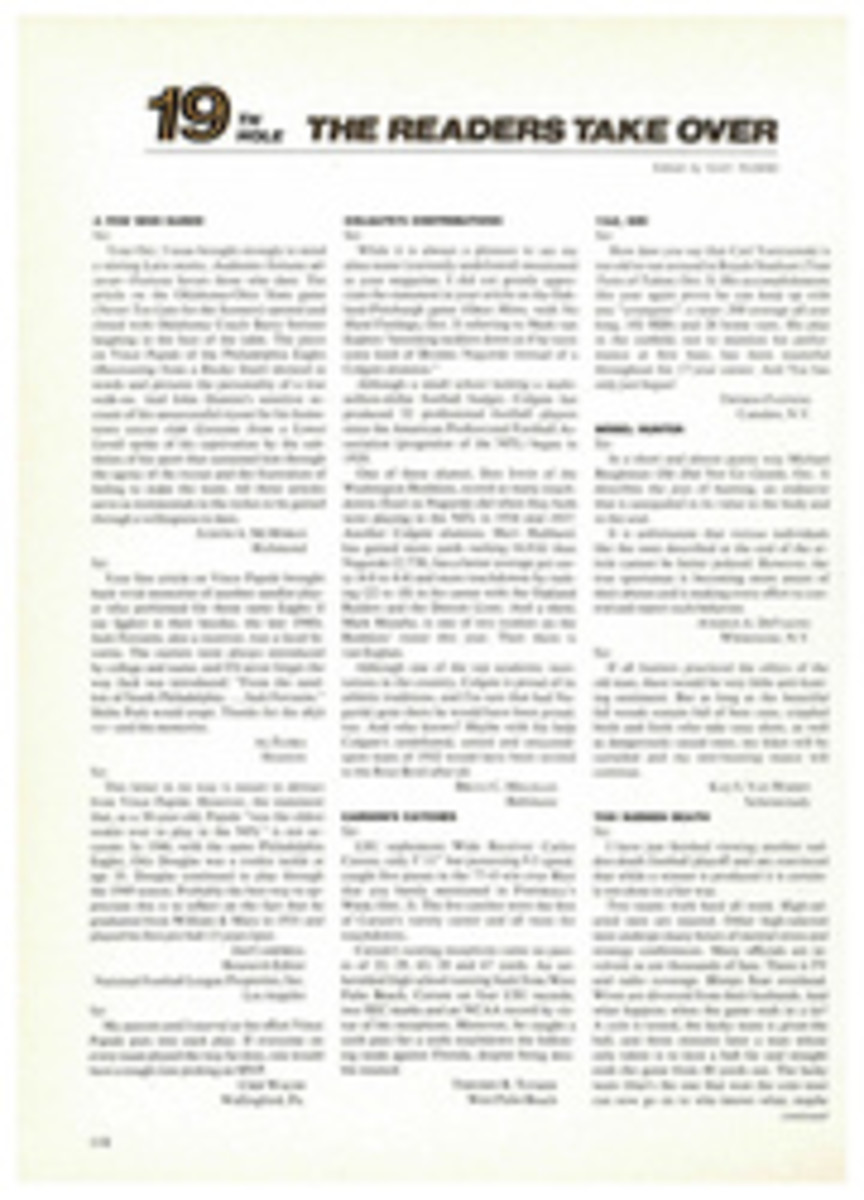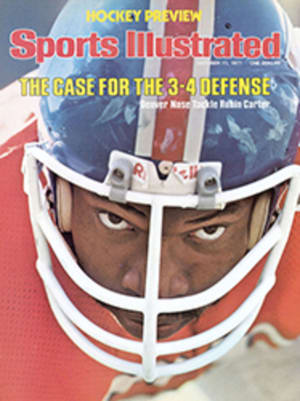
IN ITS WAY A GREAT LEAP FORWARD
There is one problem with a ski film festival: the movies are all too predictable. They offer the inevitable scenes of skiers skiing and skiers falling down. There is sure to be endless footage of freestylers flying through the air to an appropriate pop score. You can count on gorgeous backgrounds, cute kids and the standard après-ski disco number. If the sponsor of the film is an airline, which is often the case, there will be the obligatory shot of a well-labeled plane landing near a ski area. There was all of this at the fourth annual International Ski Film Festival in New York City last month, but there also was one surprise. Of the 26 films entered in four categories (racing, instruction, specials and resorts), one movie so escaped the stereotype that it could well make it on its own outside the genre.
The Great Ecstasy of the Sculptor Steiner is the first ski movie ever made by Werner Herzog, a young Munich director whose avant-garde films on such subjects as madness, the blind and dwarfs are gaining worldwide notice. The Great Ecstasy, which came in third in its category in the film festival but won a special merit award, focuses on Walter Steiner, a Swiss wood-carver who is the world's best ski flyer. There are few competitors in the sport—a perilous extension of ski jumping—and even fewer locales for its practice—a total of five ski-flying set-ups in the world. The hills range as high as 160 meters (525 feet), Steiner's speed through the air usually reaches 90 mph and, at his best, he soars some 170 meters, often leaving most of his competitors 30 meters behind.
But his ecstasy is also his torment: he almost flies too far, making hazardous landings on the flat ground, instead of on the slope. Steiner says he takes this risk because the desire to fly is compelling. As a schoolboy he dreamt that he could soar over his village of Wildhaus. Ski flying has become an obsession with him, and bloodthirsty crowds that seem to demand records or death make him take even greater chances. "I feel as if I am in an arena and 50,000 wait to see me crash," he says.
One day Steiner flies farther than any man—177 meters—and crashes. His face is lacerated and he is in shock. For hours he is unable to remember his flight. Then he makes another jump; otherwise, he says, he would never be able to do it again. And he tells a story of a raven he raised as a boy. The bird had lost its feathers and could not fly. "I had to shoot it," Steiner says, "because it was too hard to watch it being tortured by other ravens, its own brothers." The analogy seems apt. "I should really be all alone in the world," he says at the end of the film. "I, Steiner, and nobody else."
Two years after the film was shot Steiner found he had plenty of company. In the more conventional sport of ski jumping, he finished ninth in both the 70-meter and 90-meter events at the 1976 Innsbruck Olympics.
Sober and thoughtful treatments like Herzog's do not fit the image of a happy skiing scene, but the festival did include the usual abundance of fluffy entertainment reels that do. The best among these was another Munich entry, a spoof called A Family Trophy, featuring the brothers Fuzzy, Ernst and Franz Garhammer and their 15-year-old sister Hedy, all of whom have won top prizes in European freestyle competitions. There is a lot of romping about on steep chutes, a slapstick number in which Fuzzy and Ernst do Telemark turns and flips on ancient skis, even a chase scene in which the three brothers, looking like a caterpillar on a single pair of skis, chase after Hedy. It is such a joyful movie, with so many spontaneous turns, that the four seem to have dropped the script somewhere in a snowbank. "We just made things up as we went along," admitted Ernst. And the judges and those in attendance did not seem to mind.
Perhaps the reason the Garhammers did not take the Silver Ski Award back to Munich was that the all-American panel of judges felt more at home with a pretty, but standard, resort film titled Color It White and Call It Stowe. It portrays the splendor of a Vermont winter scene, with a bell ringing in the church steeple, mugs of soup served by the fire and more powder snow than anyone can remember encountering at Stowe. As the narrator says, Stowe is a very nice place with very nice people. And, at least this year, very nice was good enough for the most prestigious award at the International Ski Film Festival.
PHOTO

